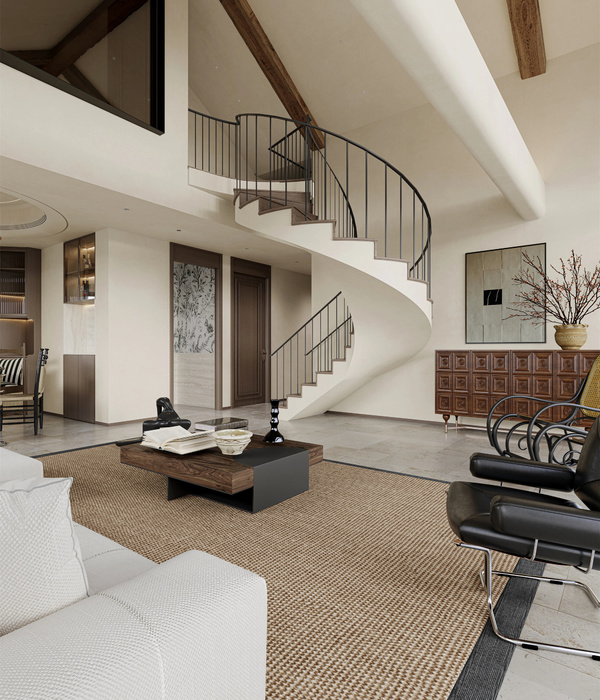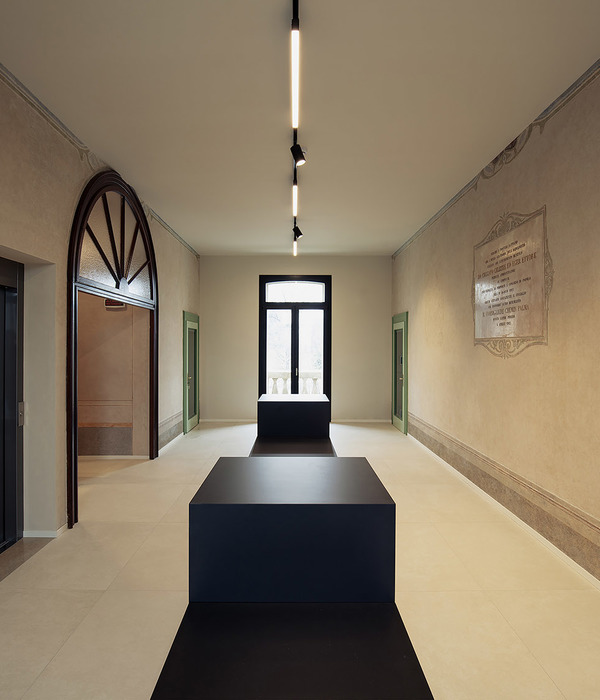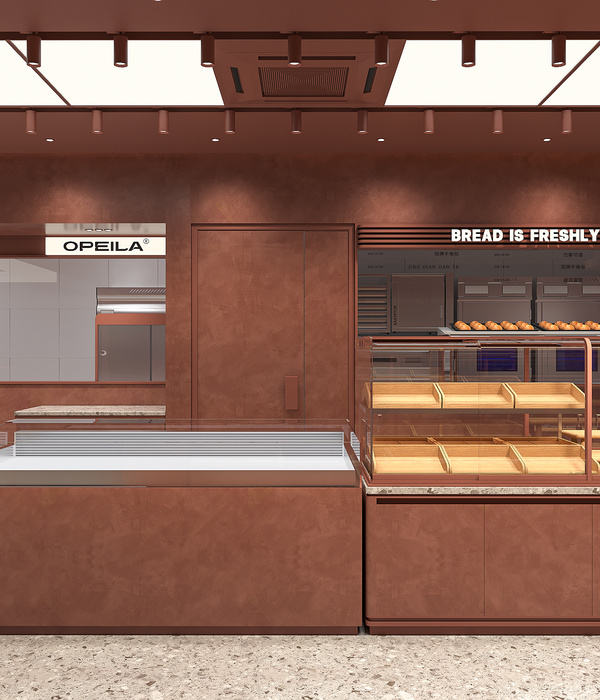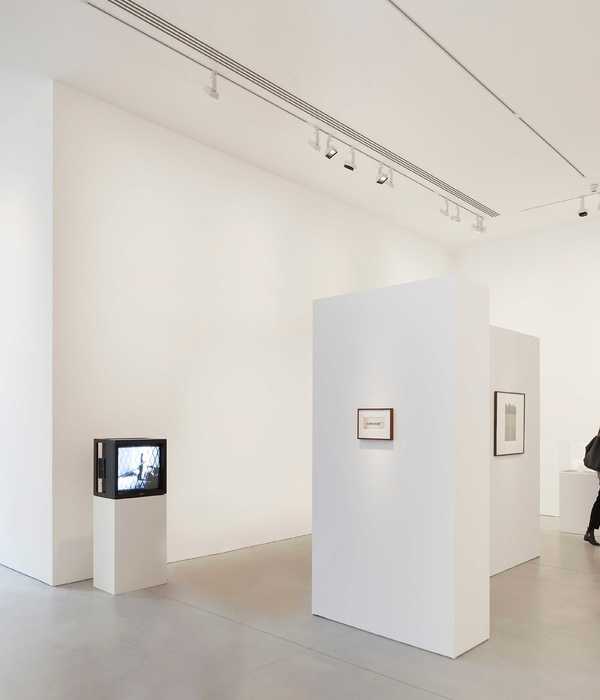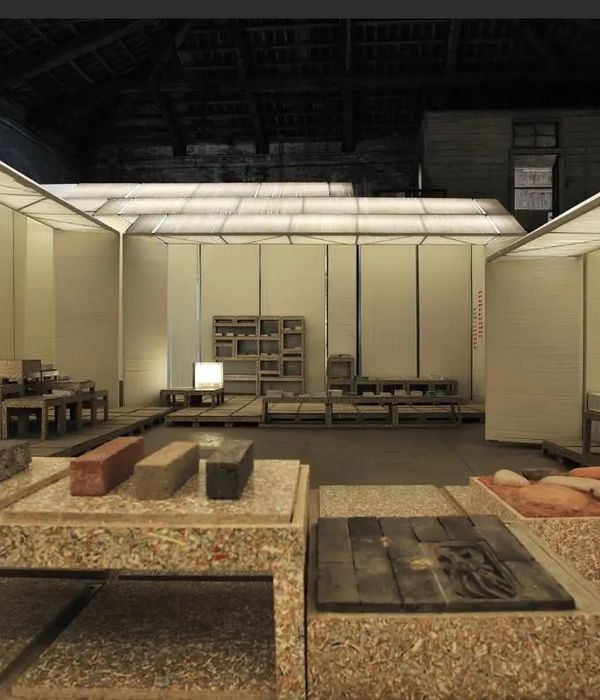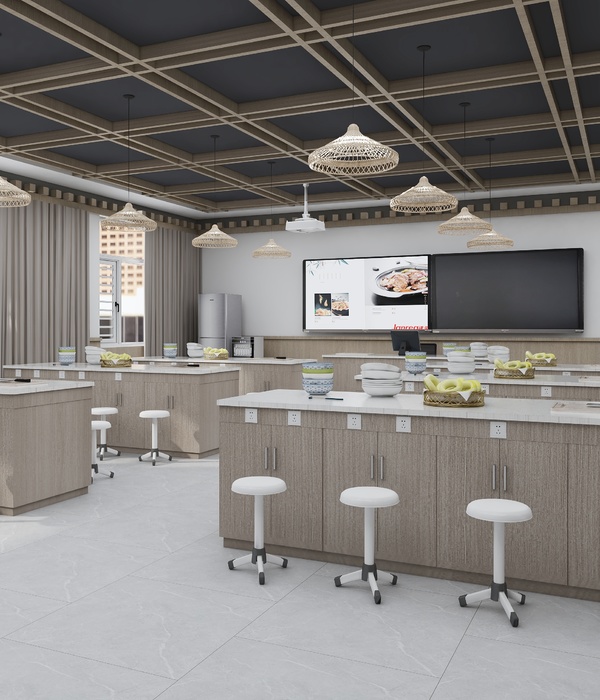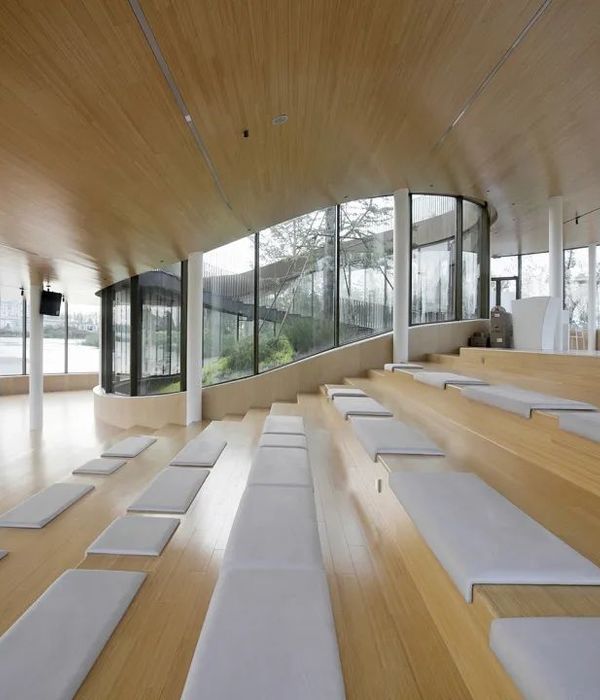- 项目名称:Hive Mind
- 设计单位:CAUKIN Studio
- 设计团队:Harrison Marshall,Joshua Peasley,Christian Brown,Cassie Li
- 项目客户:Eden Project,B4 Project
- 施工单位:Centrespace Design
- 景观设计:LUC
- 项目顾问:Rodger Dewhurst
- 合作者:Christian Brown
- 照片来源:Katie Edwards
公司: CAUKIN Studio
类型: 景观
地区: 英国
CAUKIN Studio是一个年轻的设计工作室,与Eden Project和B4 Project一起在英国康沃尔设计了一个观察蜂巢。展馆由回收的脚手架杆建造而成,它就像一座雕塑灯塔,吸引着游客前来观赏生活在里面的25,000只蜜蜂,很快就会增加到明年夏天的50,000只。由9名建筑系学生和毕业生组成的多国团队在CAUKIN工作室的指导下,历时3周完成了该结构的建造。
CAUKIN Studio, a young design and build social enterprise, has worked alongside the Eden Project and the B4 Project to design an observation beehive in Cornwall, UK. Constructed from reclaimed scaffolding poles, the pavilion acts as a sculptural beacon to draw in visitors to view the 25,000 bees that live within - soon to increase to 50,000 by next summer. A multi-national team of 9 architecture students and graduates built the structure under guidance from CAUKIN Studio over the course of 3 weeks.
Eden Project是英国康沃尔的一个受欢迎的旅游景点,里面有许多来自不同气候和环境的植物。2019年10月,成为本地黑蜂(Apis mellifera mellifera)的保护区,展馆将进一步使游客了解这些生物的重要性,并了解它们是如何生活的。
The Eden Project, a popular visitor attraction in Cornwall, England houses many plants from diverse climates and environments. In October 2019, the centre celebrated becoming a protected bee reserve for the native dark honey bee (Apis mellifera mellifera), by unveiling the new observation hive. The pavilion will enable visitors to learn about the importance of these creatures and see how they live.
就像蜂群作为一个单一的有机体一样,项目中的每一个结构柱都是相互联系和相互依赖的,展馆由当地回收的标准脚手架和可持续的木材建造而成,格子的形状仿造了蜜蜂蜂窝。脚手架的支柱是由Sir Robert McAlpine Ltd捐赠的。
In the same way as a bee colony acts as a single organism, each structural column is connected and dependent on the others in order for it to stand strong. The pavilion has been made with locally-sourced reclaimed standard scaffolding and sustainably sourced timber. The silhouette of the structure creates lattice shapes in reference to the honeycomb produced by bees. The scaffolding poles were kindly donated by Sir Robert McAlpine Ltd.
打开两扇大木门,露出一个玻璃屏风,将访客分隔到蜂箱中。蜂巢与结构的其余部分隔离地被支撑,从而最大程度地减少了展馆上的任何潜在干扰或振动。观察蜂房本身是由克里斯蒂安•布朗(Christian Brown)设计和建造的,它们是用镜子和丙烯酸树脂制成的,使游客可以从各个角度看到蜂房的全部工作原理。
Two large timber doors open up to reveal a glass screen that separates visitors to the beehive. The hive is supported in isolation from the rest of the structure, minimising any potential disturbance or vibrations on the pavilion. The observation hive itself was designed and built by Christian Brown out of mirrors and acrylic, allowing visitors to see the full workings of the hive from every angle.
Eden Project的乔•艾尔沃西博士说:“传粉者,包括蜜蜂,为我们三分之一的作物授粉,帮助我们的野花生存和茁壮成长。”它们在保护我们农村的生物多样性和食物供应方面发挥着巨大的作用。精心挑选的本地花朵填满了两边的花盆。它们的生长和死亡是周期性的,反映了蜜蜂和蜂巢的生活。内置的花盆位于长椅旁边,提供了一个休息的空间,在这里可以欣赏到长阿迪的其他景观,周围是当地的黑蜜蜂和植物发出的嗡嗡声!
Dr Jo Elworthy, Eden’s Director of Interpretation, said: “Pollinators, including bees, pollinate around a third of our crops and help our wild flowers to survive and thrive. They play a huge role in conserving the biodiversity of our countryside and food supply.” Carefully chosen native flowers fill the planters on each side. They will grow and die in a cyclical nature, reflecting the lives of the bees and their hive. The built in planters sit alongside benches that provide a space to rest and enjoy the view over the rest of the Eden Project, surrounded by the buzz of the native dark honey bees and plants!
▼项目图纸
项目名称:Hive Mind
设计单位:CAUKIN Studio
项目位置:英国 康沃尔郡 Eden Project
设计团队:Harrison Marshall, Joshua Peasley, Christian Brown, Cassie Li
项目客户:Eden Project, B4 Project
施工单位:Centrespace Design
景观设计:LUC
项目顾问:Rodger Dewhurst
合作者:Christian Brown
照片来源:Katie Edwards
Project Name: Hive Mind
Architecture Firm: CAUKIN Studio
Project location: Eden Project, Cornwall, UK
Photographs: Katie Edwards
Design Team: Harrison Marshall, Joshua Peasley, Christian Brown, Cassie Li
Clients: Eden Project, B4 Project
Engineering: Centrespace Design
Landscape: LUC
Consultants: Rodger Dewhurst
Collaborators: Christian Brown
{{item.text_origin}}




